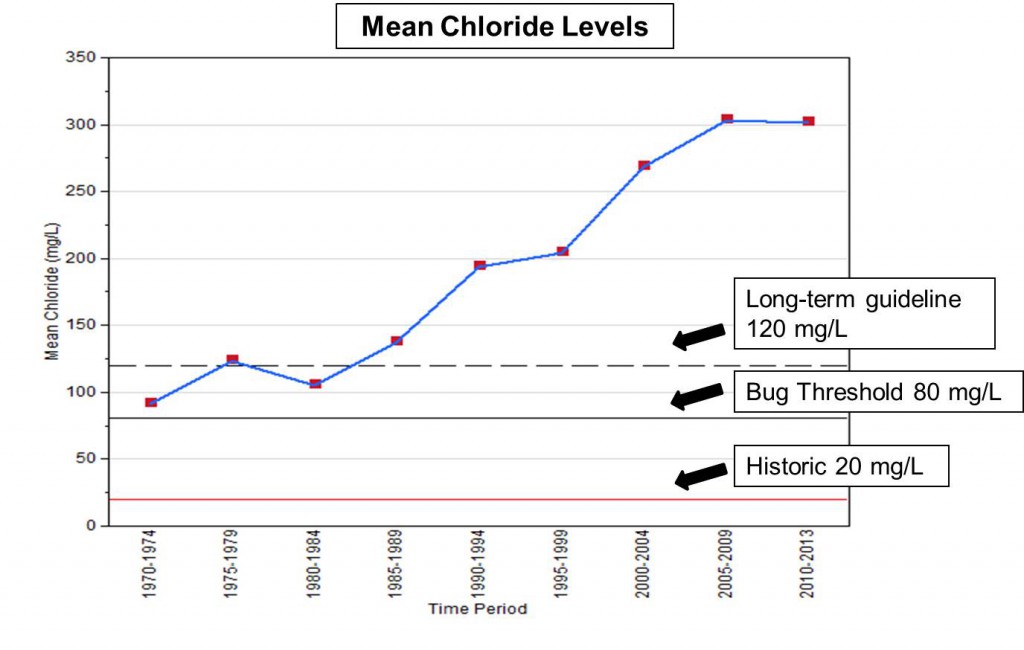Road salt is the main source of chloride in Toronto area streams. Chloride does not break down or settle out of water making it a persistent water quality issue. Urban runoff flushes chloride into natural systems where it accumulates and persists in streams, ponds, soils, and groundwater aquifers.
The March 2016 issue of Freshwater Science highlights the findings from Toronto and Region Conservation’s (TRCA) Environmental Monitoring team, which suggest that chloride levels in streams above 80 mg/L were changing the composition of the aquatic bug community. The data showed that from 2002 to 2012 there were substantial decreases in the abundance of stream-dwelling bugs that were sensitive to chloride, including the number of locations where they were found. Many of these sensitive bugs were no longer found in 2012, plus there was an increase in bugs tolerant to pollution.

Currently, 5-year average stream chloride levels across the GTA are in exceedance of the long-term Canadian Water Quality Guidelines of 120 mg/L, the limit set for the protection of aquatic life. In fact, chloride levels at approximately 50 stream monitoring stations across the Greater Toronto Area (GTA) almost doubled from 2002 to 2012. This trend is consistent with the rising chloride levels observed since the early 1970s, which shows concentrations rising dramatically from the mid 1980s onwards.
Chloride levels are correlated to urbanized areas: so as development increases, stream chloride levels increase. Knowing this, Environment Canada published voluntary guidelines in 2004 to encourage large municipalities to reduce the amount of salt applied in winter months. Despite many municipalities adopting these guidelines, the data is suggesting that chloride levels are actually increasing in areas where urbanization has slowed. For example, the City of Toronto has reduced its road salt application by as much as 26% in the last 10 years (Kilgour et al. 2014) but stream chloride levels continued to increase in watersheds that are almost entirely urbanized, like the Highland Creek watershed (TRCA’s 2014 Surface Water Quality Summary). It is likely that road salt applications on large private parking lots and individual households may have increased, although we do not have the data to support this yet. Research estimates that 40% of road salt inputs to Highland Creek streams were not from municipal sources (Perera et al. 2010).
The fact remains chloride levels in streams continue to rise along with rates of urbanization in the GTA. Urbanization is proceeding in a northerly direction towards the more rural reaches of the watersheds, where streams are smaller and therefore more sensitive to impacts from contaminants. Improved policy and management decisions concerning the use of road salt are needed in order to protect our water resources. TRCA remains committed to monitoring water quality and aquatic communities, as well as developing innovative programs like the Salt Application Verified Equipment (SAVE) program, which makes the process of applying salt less subjective and more efficient for private contractors.

